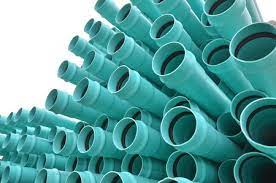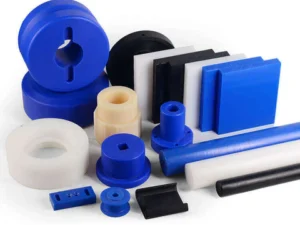Description
Polyethylene Naphthalate (PEN): The High-Performance Polyester You Should Know About
While Polyethylene Terephthalate (PET) reigns supreme as the most ubiquitous polyester plastic, its lesser-known cousin, Polyethylene Naphthalate (PEN), offers a compelling alternative for applications demanding superior performance. PEN, also a thermoplastic polymer belonging to the polyester family, boasts enhanced properties that make it a valuable material in specialized fields.
What is Polyethylene Naphthalate?
PEN is synthesized from naphthalene dicarboxylic acid (NDC) and ethylene glycol, similar to how PET is made from terephthalic acid and ethylene glycol. However, the presence of the rigid naphthalene ring structure gives PEN several advantages over PET.
Key Advantages of PEN over PET:
- Higher Tensile Strength and Stiffness: PEN is inherently stronger and more rigid than PET, making it suitable for applications requiring durability and dimensional stability under stress. This translates to a longer lifespan and reduced risk of deformation.
- Improved Heat Resistance: PEN exhibits a significantly higher glass transition temperature (Tg) compared to PET. This means PEN can withstand higher temperatures without softening or losing its form, making it suitable for applications involving heat exposure.
- Enhanced Barrier Properties: PEN offers superior barrier properties against gases like oxygen and carbon dioxide. This makes it ideal for packaging applications where preserving the freshness and quality of the contents is paramount. It also provides better UV protection.
- Greater Chemical Resistance: PEN demonstrates better resistance to chemicals, including solvents and acids, extending its usability in harsh environments.
- Lower Creep and Stress Relaxation: PEN exhibits less creep, which is the tendency of a material to deform slowly under constant stress. This makes it a better choice for applications where dimensional accuracy over time is critical.
Applications of PEN:
The superior properties of PEN make it suitable for a range of high-performance applications, including:
- High-Performance Films: Due to its strength, heat resistance, and barrier properties, PEN is used to manufacture high-performance films for applications like:
- Electrical Insulation: PEN films are used in electrical capacitors and other electronic devices.
- High-Temperature Labels: Labels for products exposed to high temperatures, such as engine components.
- Sterilizable Packaging: Packaging for medical devices and pharmaceuticals requiring sterilization processes.
- Flexible Electronics: PEN’s flexibility and thermal stability make it suitable for substrates in flexible electronic devices.
- Tire Cord and Industrial Fibers: PEN fibers are used in tire cords, conveyor belts, and other industrial applications requiring high strength and durability.
- Beverage Bottles (Hot-Fill): While less prevalent than PET, PEN can be used in hot-fill applications where bottles are filled with hot liquids, taking advantage of its higher heat resistance.
- Printed Circuit Boards (PCBs): PEN films are used as substrates in flexible printed circuit boards due to their electrical insulation and thermal stability.
Drawbacks of PEN:
Despite its advantages, PEN faces certain limitations:
- Higher Cost: The production of NDC, the key monomer for PEN, is more complex and expensive than that of terephthalic acid used for PET. This translates to a higher cost for PEN materials.
- Lower Availability: PEN production is less widespread than PET production, leading to limited availability in certain regions.
- Processing Challenges: Processing PEN can be more challenging than PET, requiring higher processing temperatures and more sophisticated equipment.
The Future of PEN:
Despite the challenges, the superior properties of PEN are driving continued research and development efforts. As cost-effective production methods for NDC are developed and demand for high-performance materials increases, the use of PEN is expected to grow in specialized applications where its benefits outweigh the higher cost.
Conclusion:
Polyethylene Naphthalate (PEN) is a valuable high-performance polyester offering significant advantages over PET in terms of strength, heat resistance, barrier properties, and chemical resistance. While its higher cost and limited availability currently restrict its widespread adoption, PEN remains a promising material for specialized applications demanding superior performance and durability. As technology advances and production becomes more efficient, PEN is poised to play an increasingly important role in various industries.










Reviews
There are no reviews yet.